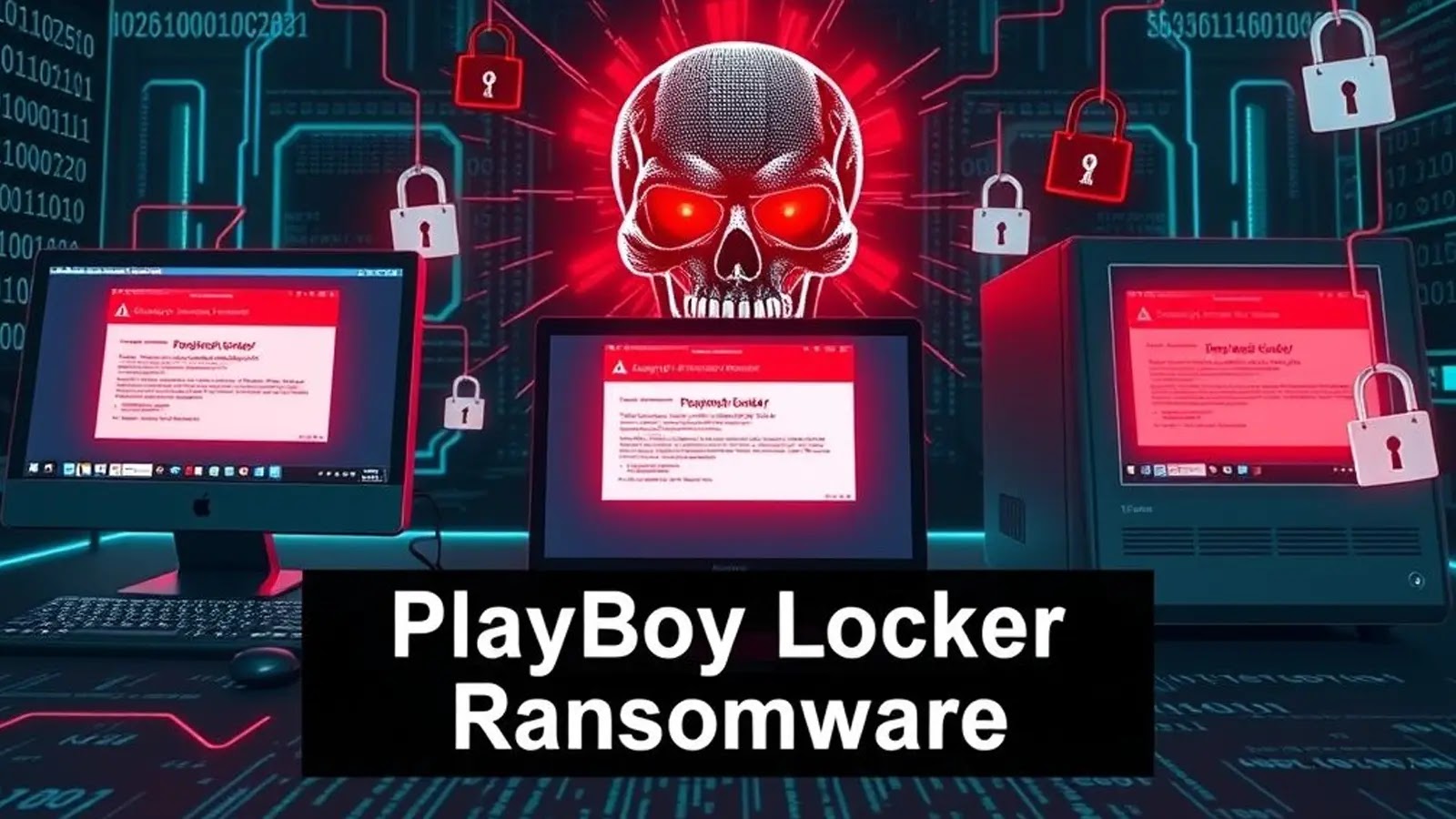In the ever-evolving landscape of cyber threats, a new ransomware variant named PlayBoy Locker has surfaced, posing significant risks to various operating systems, including Windows, Network-Attached Storage (NAS), and VMware’s ESXi platforms. First identified in September 2024, PlayBoy Locker initially functioned as a Ransomware-as-a-Service (RaaS), providing cybercriminals with a versatile tool to execute malicious activities.
Emergence and Evolution
PlayBoy Locker’s debut marked a concerning development in the cyber threat arena. As a RaaS platform, it allowed individuals with limited technical expertise to launch ransomware attacks, thereby broadening the scope and frequency of such incidents. The ransomware’s design enables it to encrypt user data effectively, appending the .PLBOY extension to compromised files, rendering them inaccessible to the victims.
A critical turning point occurred in November 2024 when reports indicated that the complete source code of PlayBoy Locker was being sold on underground forums. This dissemination of the source code raises alarms about the potential for other threat actors to acquire, modify, and deploy the ransomware, leading to an increase in its variants and a more widespread impact.
Technical Capabilities and Impact
One of the most alarming features of PlayBoy Locker is its ability to delete Volume Shadow Copies on infected systems. Volume Shadow Copies are essential for creating backup snapshots of files, and their removal severely hampers recovery efforts, leaving victims with limited options to restore their data without complying with ransom demands.
Upon execution, PlayBoy Locker initiates a comprehensive scan of the system to identify valuable data files. It employs robust encryption algorithms to lock these files swiftly, utilizing system resources efficiently to minimize detection chances before the encryption process concludes.
A particularly dangerous aspect of PlayBoy Locker is its capability to traverse network shares and encrypt data on connected devices. In corporate environments, this behavior can lead to extensive data loss across an organization’s infrastructure, as a single infected machine can compromise multiple systems connected to the network.
Evasion Techniques
To evade detection, PlayBoy Locker employs various obfuscation techniques. These may include polymorphic code that alters its signature with each infection, making traditional signature-based detection methods less effective. Additionally, the malware might use process injection to conceal its activities within legitimate system processes, further complicating detection and analysis efforts.
Infection Vectors
Ransomware like PlayBoy Locker often infiltrates systems through multiple vectors:
– Email Attachments and Links: Malicious files or links delivered via email can trick users into executing the ransomware.
– Pirated Software and Cracking Tools: Downloading and using unauthorized software can introduce malware into systems.
– Exploiting Vulnerabilities: Attackers may exploit unpatched software vulnerabilities to gain unauthorized access.
– Malicious Advertisements and Compromised Websites: Visiting or interacting with malicious ads or compromised sites can lead to infection.
Preventive Measures
To mitigate the risk of ransomware infections like PlayBoy Locker, consider the following preventive measures:
– Regular Backups: Maintain up-to-date backups of critical data on external drives or secure cloud services.
– Software Updates: Keep operating systems and software applications updated to patch known vulnerabilities.
– Email Vigilance: Exercise caution with unexpected or suspicious emails, especially those containing attachments or links.
– Security Software: Utilize reputable antivirus and anti-malware programs to detect and prevent infections.
– Network Security: Implement robust network security measures, including firewalls and intrusion detection systems, to monitor and protect against unauthorized access.
Response to Infection
If a system is infected with PlayBoy Locker:
1. Isolate the Infected Device: Disconnect the device from the network to prevent the spread of the ransomware.
2. Report the Incident: Notify relevant authorities and organizational IT departments to initiate a coordinated response.
3. Avoid Paying the Ransom: Paying does not guarantee data recovery and may encourage further criminal activity.
4. Seek Professional Assistance: Consult cybersecurity professionals for guidance on removing the ransomware and recovering data.
Conclusion
The emergence of PlayBoy Locker underscores the persistent and evolving threat posed by ransomware. Its ability to target multiple operating systems, coupled with sophisticated evasion techniques and destructive capabilities, highlights the need for vigilant cybersecurity practices. Organizations and individuals must adopt comprehensive security measures, stay informed about emerging threats, and be prepared to respond effectively to incidents to safeguard their data and systems.



